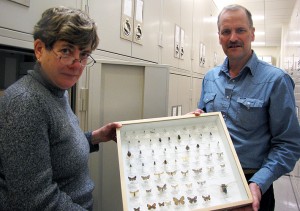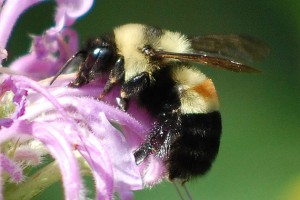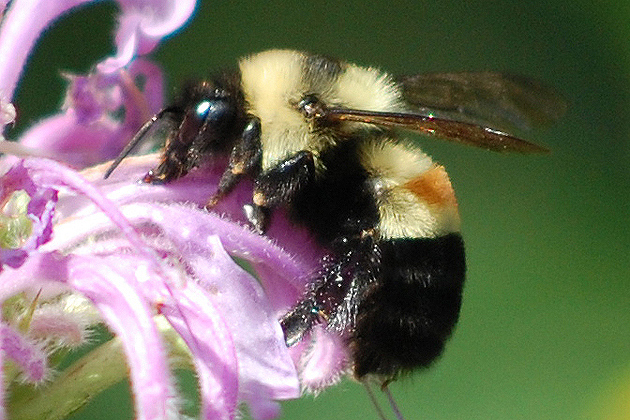Sometimes, significant changes in the environment go unnoticed because no one is paying attention.
Fortunately UConn is paying attention and some of the results of that diligence can be found in articles recently co-authored by David Wagner, professor of ecology and evolutionary biology in the College of Liberal Arts and Sciences, and published this week in the Proceedings of the National Academy of Sciences (PNAS) and soon to appear in Conservation Letters, a journal of the Society for Conservation Biology.

“Without the data available in our biological collections, we wouldn’t be able to undertake the longitudinal studies these articles are based on,” Wagner says. “Our collection is one of the most modern and most well-supported in the Northeast, particularly in terms of state universities. It’s really invaluable in helping us look at changes in climate and in biological systems.”
Wagner is an insect systematist with a particular interest in early successional habitats in the Northeast. That’s how he became interested in pollinator decline, the importance of invasive species, and the threat of climate change. He’s fond of saying, “Dead bugs do tell tales,” and, as if to prove the point, he cites the research described in the two articles as prime examples.
The PNAS article, “Climate-associated phonological advances in bee pollinators and bee-pollinated plants,” details climate-associated shifts in the phenology of wild bees and compares these shifts to published studies of bee-pollinated plants over the same time period. Using contemporary data as well as museum specimen data dating back to the 1880s, researchers looked at 10 species of wild bees from northeastern North America. Their model indicated that over the past 130 years, and especially since 1970 when the effects of global warming really started to become apparent, the spring emergence of these bee species has advanced by a mean of about 10 days.
The authors also examined plant data from four different published studies and found virtually the same mean advance of seasonal cycles in 10 species of plants. Of particular significance is the synchrony of these changes, suggesting that bee emergence is keeping pace with shifts in host-plant flowering among certain species.

The second paper investigates the dramatic decline in several North American bumble bee species, particularly the Affable bumble bee (Bombus affinis) that has been extirpated along with its social parasite, Bombus ashtoni. The Yellow Banded bumble bee (Bombus terricola) has declined so precipitously that it too may be on the brink of extinction. Only one of this formerly widespread species has been seen in Connecticut in the last 10 years.
The authors tested their hypothesis that pathogen spillover from commercially introduced bumble bees – those used in pollination of commercially grown fruits and vegetables – caused the declines of three wild species by using a large dataset of bumble bee occurrence along with agricultural census data. In addition to finding support for their initial hypothesis, the researchers also determined that issues such as pesticide use and loss of habitat are not major causes of decline in the species they studied. Thus, it is imperative to determine what currently unknown causes may be responsible for pollinator population losses.
“These studies are important,” Wagner says, “because they look at what’s been happening in the environment over time. We couldn’t do this kind of research without the benefit of the data we’ve accumulated over the years.” Such studies add traction to the arguments that biological collections … the ‘dead bugs’ Wagner refers to … have much to tell us about the consequences of climate change.
Wagner is part of a National Science Foundation collaborative that is digitizing and sharing data on pollinators. “There’s a national concern about the decline in pollinators,” he says. “The NSF is concerned, the USDA is concerned, conservation biologists are concerned … so this large project involving universities and museums in both the U.S. and Canada is focused on gathering and sharing data on all species of bees.
“Without all this specimen data, we wouldn’t be able to document what happened in the past. We have a good data set going back to the turn of the 20th century. The Connecticut Agricultural Experiment Station in New Haven has been active in bees, and combining that information with what we have in our collection gives us a pretty good historical record.”
In fact,” Wagner adds, “we’re hoping to use Connecticut as a benchmark for monitoring change. It’s a tiny state, but we still have over 300 wild bee species. We’ve had one or two [species] that appear to have become extinct within the last 20 years. In our lifetime in Connecticut, we’re starting to lose pollinators. It’s time to raise the clarion call, and we’re literally in one of the best places in the New World to look at faunal change over the last century. For someone with my background and interests, I couldn’t be in a better place.”



